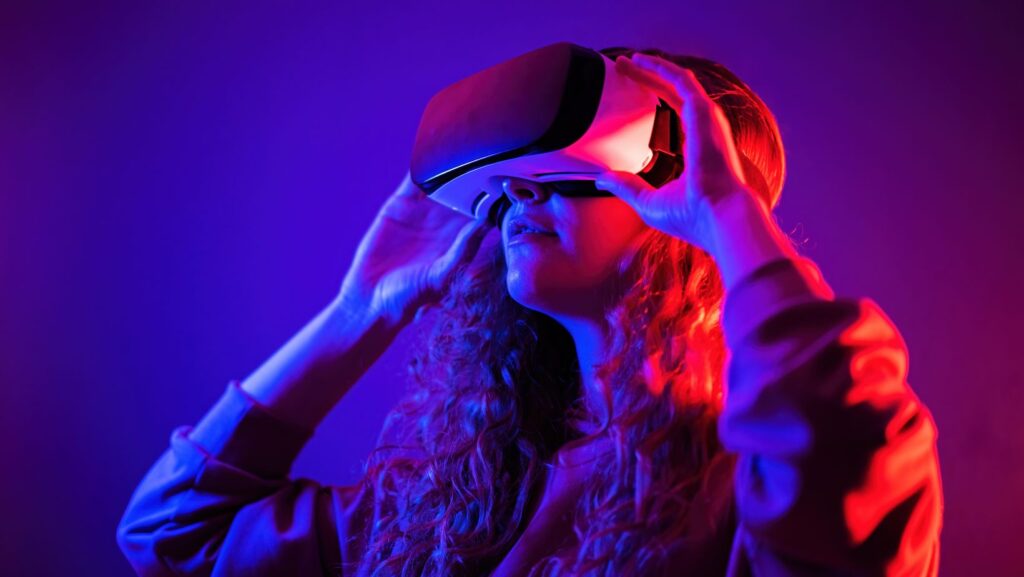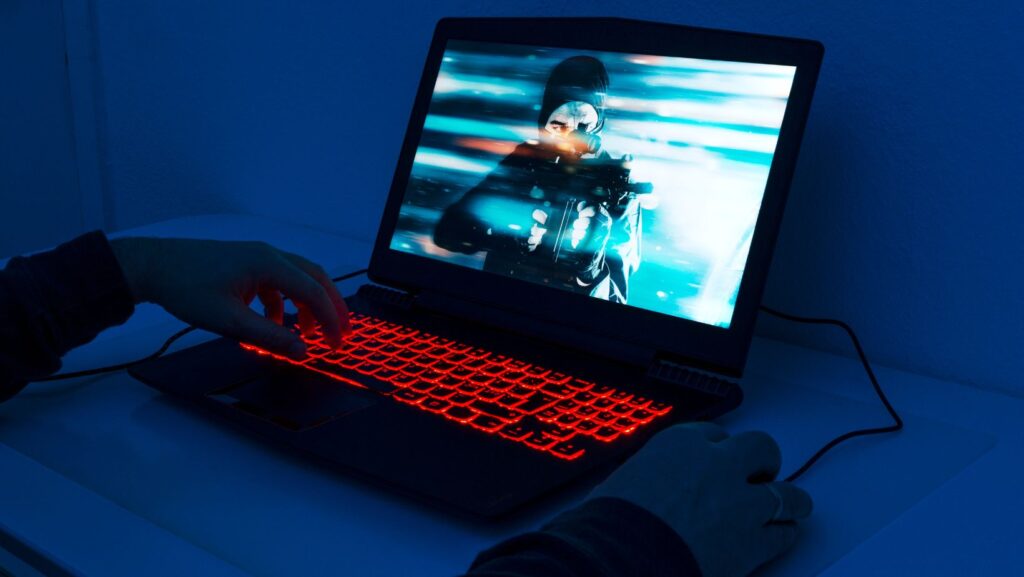 Virtual reality (VR) is transforming the gaming landscape, offering players an immersive experience like never before. By placing gamers directly into the heart of the action, VR technology creates a sense of presence that traditional gaming setups simply can’t match. From breathtaking visuals to intuitive controls, VR is redefining what it means to play. As more developers embrace VR, the variety and quality of VR games continue to grow. Players can now explore fantastical worlds, engage in intense battles, or solve intricate puzzles, all while feeling as if they’re truly inside the game. The future of gaming is here, and it’s more interactive and engaging than ever.
Virtual reality (VR) is transforming the gaming landscape, offering players an immersive experience like never before. By placing gamers directly into the heart of the action, VR technology creates a sense of presence that traditional gaming setups simply can’t match. From breathtaking visuals to intuitive controls, VR is redefining what it means to play. As more developers embrace VR, the variety and quality of VR games continue to grow. Players can now explore fantastical worlds, engage in intense battles, or solve intricate puzzles, all while feeling as if they’re truly inside the game. The future of gaming is here, and it’s more interactive and engaging than ever.
VR in Gaming
Early Developments and Innovations
The roots of VR in game trace back to the late 20th century. Sega’s 1991 VR headset attempt, while never released, marked a significant step. In 1995, Nintendo launched the Virtual Boy, a console with 3D graphics. Though commercially unsuccessful, it pioneered the concept. Other early efforts included Arcadia’s “The Elysium” and Virtuality’s arcade machines, which offered immersive gaming experiences with head-tracking and 3D visuals.
Breakthroughs in the 21st Century
 The 21st century brought significant advances in VR gaming. Oculus Rift, released in 2016, set new standards with its wide field of view and precise tracking. HTC Vive, launched the same year, introduced room-scale VR, allowing users to move freely within a designated area. PlayStation VR, released in 2016 as well, made VR more accessible to console gamers. These developments, combined with advancements in processing power and graphical fidelity, enabled more immersive and complex games. Game titles like “Beat Saber,” “Half-Life: Alyx,” and “Resident Evil 7: Biohazard” showcased VR’s potential, offering unique experiences unavailable through traditional gaming.
The 21st century brought significant advances in VR gaming. Oculus Rift, released in 2016, set new standards with its wide field of view and precise tracking. HTC Vive, launched the same year, introduced room-scale VR, allowing users to move freely within a designated area. PlayStation VR, released in 2016 as well, made VR more accessible to console gamers. These developments, combined with advancements in processing power and graphical fidelity, enabled more immersive and complex games. Game titles like “Beat Saber,” “Half-Life: Alyx,” and “Resident Evil 7: Biohazard” showcased VR’s potential, offering unique experiences unavailable through traditional gaming.
Key Technologies Driving VR Gaming
Hardware Components
Several hardware components contribute to VR gaming’s immersive experiences. Head-mounted displays (HMDs), like the Oculus Rift and HTC Vive, use advanced screens and optics to provide wide fields of view and high resolutions. These devices often incorporate motion-tracking sensors and gyroscopes for accurate head movement detection. Additionally, hand controllers, such as those from PlayStation VR and Valve Index, offer precise hand-tracking and haptic feedback, enabling users to interact seamlessly with virtual environments. High-performance PCs and gaming consoles support these devices by delivering the necessary processing power and graphical capabilities to render detailed, realistic worlds.
Software and Game Development
 Software and game development play crucial roles in VR gaming. Game engines like Unity and Unreal Engine provide developers with comprehensive tools to create intricate VR environments. They offer advanced features like physics simulations, particle effects, and lighting systems optimized for VR. Furthermore, SDKs (Software Development Kits) from companies like Oculus and SteamVR enable developers to integrate VR functionalities easily. These kits include pre-built functions for motion tracking, input handling, and 3D audio, streamlining the development process. As a result, software innovation drives the creation of more immersive and interactive VR gaming experiences.
Software and game development play crucial roles in VR gaming. Game engines like Unity and Unreal Engine provide developers with comprehensive tools to create intricate VR environments. They offer advanced features like physics simulations, particle effects, and lighting systems optimized for VR. Furthermore, SDKs (Software Development Kits) from companies like Oculus and SteamVR enable developers to integrate VR functionalities easily. These kits include pre-built functions for motion tracking, input handling, and 3D audio, streamlining the development process. As a result, software innovation drives the creation of more immersive and interactive VR gaming experiences.
VR Gaming Experiences
Types of VR Games
VR gaming offers diverse game types across various genres. Action games (e.g., “Half-Life: Alyx”) provide intense combat experiences. Puzzle games (e.g., “Tetris Effect”) blend spatial awareness with problem-solving. Adventure games (e.g., “The Walking Dead: Saints & Sinners”) combine exploration with narrative depth. Simulation games (e.g., “Microsoft Flight Simulator”) recreate real-world activities with high realism. Sports games (e.g., “Creed: Rise to Glory”) mimic physical sports movements, giving players immersive training sessions. Horror games (e.g., “Phasmophobia”) heighten the sense of fear through immersive environments. Each type offers unique interactions and experiences, enhancing the variety in VR gaming.
Immersive Game Design
Immersive game design in VR focuses on creating realistic and engaging environments. High-resolution graphics enhance visual fidelity. Spatial audio provides a 360-degree sound experience. Haptic feedback in controllers (e.g., vibrating sensations) enhances tactile interactions. Realistic physics enable believable object manipulation. Room-scale tracking allows players to move freely within a physical space, matching in-game movements. Interactive storytelling integrates player choices, impacting game outcomes. These elements combine to craft immersive experiences that blur the line between virtual and reality, making VR gaming more engaging and captivating.



